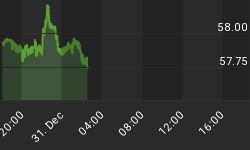Wal-Mart was the "big" story this week. A good number of media outlets reported that Wal-Mart was looking at adding a luxury component to their US stores. Pretty soon, shoppers will now be able to eat sushi and buy $500 dollar wine as they shop for their typical household goods.
It is ironic, however, that a much bigger Wal-Mart story did not garner as much media attention. In a sense, it shows the US centric focus on the economy. Nonetheless, the recent news that Wal-Mart is looking at adding 150,000 employees in China over the next 5 years does hold some significance. First, it reaffirms the fact that the Chinese consumer economy is both growing and still in its early stages. Twenty years ago, your average Chinese citizen made just enough money to cover their basic household expenses. Today, they are looking at purchasing cell phones, computers, and televisions. Tomorrow, they will trade in their bicycles for cars.
Second, this expected demand for consumer goods will lead to a continued demand for commodities. Although most people have focused on the industrialization aspect of this commodity bull market, the demand for commodities due to increased demand in consumer products will also contribute to higher commodity prices. There are 1.3 billion consumers in China and another 1.1 billion consumers in India. Most of these consumers do not have the basic household goods that are associated with western economies. The main reason for this is that they cannot afford it. However, as China and India continue to industrialize, a wealthier and educated working class will be created. In turn, this working class will now have the disposable income to purchase goods that you can find at your local Wal-Mart.
Unemployment numbers also came out this week. The department of Labor reported that 302,000 workers applied for jobless claims last week. This was a decline of 11,000 from the previous week. According to the labor department, jobs were created in construction, retail, financial services, and healthcare sectors. As a result, most pundits point out to the strengthening job market as signs of a strong economy. What some fail to point out, however, is the manufacturing sector continued to lose jobs.
It is true that a job is a job no matter which sector that it is in. However, the fact that the United States has become a service sector economy is worrisome. Rising interest rates will inevitably affect a good number of these sectors that posted gains over the last week. Construction jobs will likely decline as we experience a housing slowdown; retail jobs will suffer as consumers curb their spending due to higher mortgage payments; and financial services typically do not thrive in a recessionary environment where investors typically shy away from the markets and other investments. And so, although jobless claims dropped in the last several weeks, I expect higher unemployment in years to come.
Part of the reason for this eventual rise in unemployment, is that we have exported most of our manufacturing jobs abroad. In the past, the United States was a manufacturing economy. Electronics, wood furnishings, apparel all where made in manufacturing plants across America. Today, we import all of these goods. Hence, our record trade deficit. If you don't believe me, just walk around your home. Notice the products that you have in your home. Where are they made? China? Mexico? Japan? Italy? Most likely, they are not made in the USA.
You can either jump on the commodity bull market now, or regret that you did not participate in potentially the greatest bull market in history. I am offering a free brochure titled "The Case for Commodities" to anyone who asks. You can request one here.
If you are interested in receiving my weekly commodity newsletter please sign up here.
















